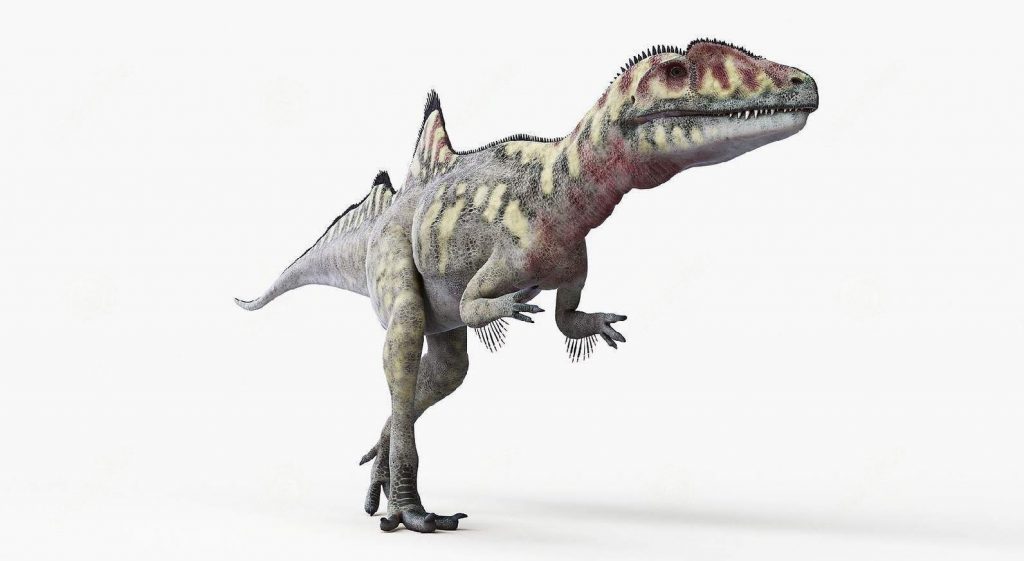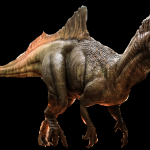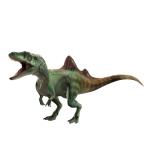“Did you know that the Concavenator had sported quill knobs on the arms, very much like dromaeosaurs and modern-day birds, thus leading to the possibility that it had feathers, although not completely covering the body, as it is likely it also had some scales?”
– Gunnar Eversoll
Concavenator corcovatus (“Hunchback Hunter from Cuenca”) is a species of a theropod from Spain founded on September 8, 2010. It can have one to two humps, similar to spinosaurids, on its back which is speculated to be used for body heat, storing body fat, and it is being argued that it could also be used for communication. Concavenator can grow to be 20 feet long and its hump can grow to be 16 inches long. It has been speculated that the hump was brightly colored, thus making it noticeable from a mile away.
If a Concavenator was healthy, its hump would be large, probably making it a significant mate and deterring possible rivals and other theropods. Concavenator also likely had proto-feathers on its arms, giving more evidence to the theory that most dinosaurs had plumage, proto-feathers and a more direct relation to modern avians.
Jurassic World Dual Attack Concavenator Dinosaurs in Medium Size with Button-Activated Dual Strike Action Moves Like Tail and Head StrikesDNA Scan Code.

Name Meaning
Diet
Lenght
Weight
Vocalisation
Hump Backed Hunter from Cuenca
Carnivorous
6 meters (20 feet)
2-3 tons (4,000-6,000 lbs)





